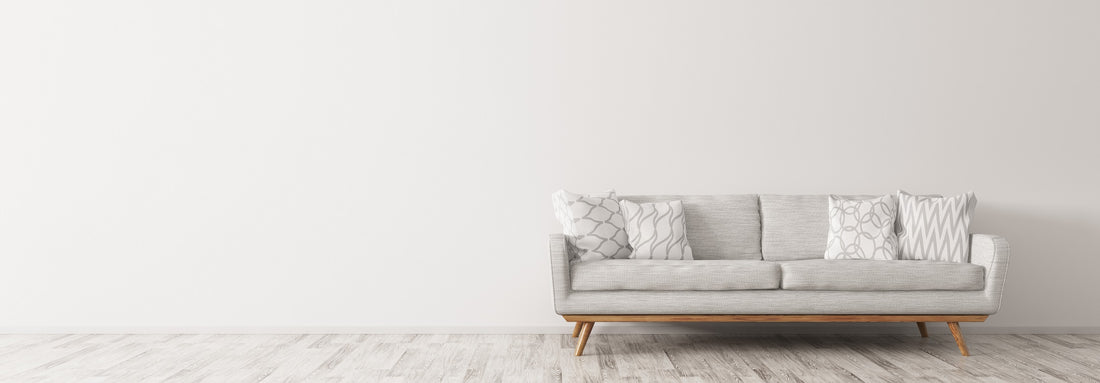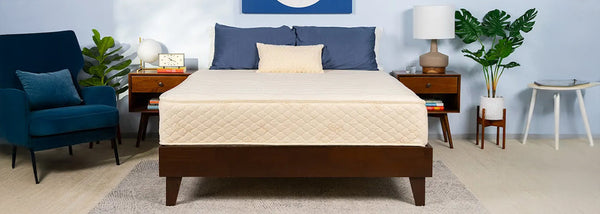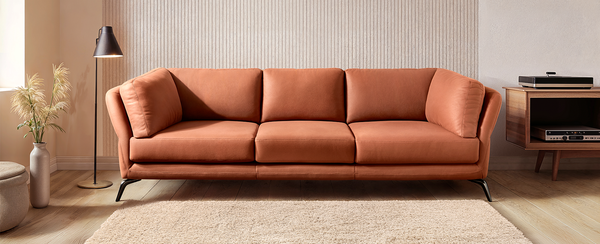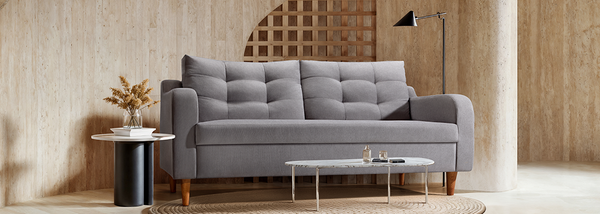Tips and Tricks on Maintaining Your Sofa Set

Couches and sofas are furniture sets that endure much wear & tear. While sofas are only supposed to provide us seating comfort, kids often jump on them and we dump them with clothes, which can make even the best sofa set seem worn out in a short period. Moreover, there have been instances where improper maintenance has ruined good sofas. To extend your sofa’s longevity you must be well-informed about the proper care based on the material used, its structure and how to keep it as clean as possible over a long span of time.
Sofas come in a wide range of fabrics, designs, and materials. From faux and pure leather to linen and cotton upholstery, the fabrics are innumerable and differ in upkeep techniques and require special care of their own. Ordinary household cleaners do not work on a ‘one size fits all’ basis, especially when it comes to sofa sets. Considering the amount of cleaning agents available, doing a decent cleaning job is possible, without taking the help of professional cleaners. However, professional deep cleaning at regular intervals is advisable.
Here are some of the common tips and tricks to maintaining your sofa set:
-
Start by the safest option of vacuum cleaning:
Vacuum clean your sofa set intermittently with a soft-bristled brush or gently brush the sofa to keep dust and dirt off its upholstery and avoid any embedding between fibres. Before using the vacuum cleaner, get rid of the cushions and clear all materials that are stuck in between. Use your vacuum cleaner to clean the dust from your couch with the help of specialist vacuum attachments to reach the crannies.
Most sofa sets have a certificate or care tag attached that gives guidelines on cleaning. Go through those guidelines carefully, as they will have the recommendation on the proper range of cleaning products to purchase and the correct cleaning method to use. If your sofa set has detachable covers, you can zip them off and either dry-clean or machine-wash them.
Immediately after a spillage on the sofa, blot the cleaning liquid on the stain with a washcloth or paper towel before the stain goes deep into the sofa. Once it is blotted, clean the surface with water and a mild detergent. Do not scrub too much as it can spoil the fabric of your sofa set. Solid spots if any must be taken off with a blunt knife. Otherwise, you can use baking soda and white vinegar for cleaning. It is also advisable to use professional cleaning services for stains that are too deep or big
-
Cleaning leather upholstery:
In addition to giving a sophisticated and stylish look to your interiors, leather is also resistant to all kinds of stains. Vacuum cleaning once in a couple of days is sufficient to keep it clean. However, if you wish to have the sofa set deep cleaned, use specialized leather products. Wax-based leather cleaners and saddle soap will not harm your sofa set. Do a spot-test first of the cleaner in an isolated place and follow the instructions on the label.

-
Maintaining cotton upholstery:
Cotton is the most frequently used material for decorative upholstery. If you regularly dust your upholsteries, washing cotton fabrics once each month is enough. Wash each fabric individually since cotton loses colour. Dry them in the shade as direct sunlight could lead to fading of the colours. -
Do not soak your sofa fully:
While cleaning your sofa, make sure that you do not soak the couch completely. Too much water can shrink your fabric and leave stains. Additionally, it becomes difficult to dry the sofa set later. A moist sofa set is a breeding ground for mildew and mould.
In addition to the tips mentioned above, you must also keep in mind the following suggestions that will ensure a long life for your sofa set:
- Avoid outdoor use for your sofa set and contact with water or sustained moisture.
- Prevent your sofa from getting exposed to direct sunlight as this can lead to colour fading.
- If you have removable back cushions, turn them around periodically and fluff them up while assembling so that the cushion stays even.
- Avoid food and drink spillage of any kind and in case anything gets spilt, do not leave the surface unattended.
- A scotch guard treatment is the easiest and most useful option to safeguard against spills or stains and keeps pet hair at bay.
- Get your sofa set cleaned professionally once every year as they will take care of the nooks and corners that you fail to reach and make the sofa set more durable.
Invest in a Good-Quality Sofa Set
The wear & tear of sofa set fabric often depends on the fabric grade. As you would imagine, high-quality fabrics will endure wear & tear better.
Most fabric couches are treated with a stain-resilient finish, so when spills do occur, they can be easily cleaned with a handheld steam cleaner or specialty products. However, if the fabric is of poor quality, removing stains could be difficult.
Eventually, the best way out to ensure that your sofa sets endure wear & tear, particularly during the innumerable hosting sessions, would be to spend on a good quality sofa. While it could be appealing to purchase a more reasonably priced, lower-quality sofa set to fulfil your lifestyle needs, it could end up costing more over time as they wear out faster. A good-quality sofa set is a long-term investment and with appropriate maintenance can go on for decades.
Duroflex offers sofa sets made from premium fabric, which is resistant to pilling and colour fading and is certified for European standards of durability. The backrest of sofa sets is stuffed with a non-siliconized virgin polyfill that offers great support and the seat comes with a high elastic nylon webbing. The sofa legs are designed to make the sofa tolerant to physical impact.
Featuring a durable wood frame, the Duroflex sofa is termite-resistant and retains its shape over a long period.











